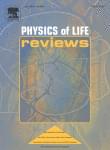Based on a novel intertwined theoretical and experimental approach, we examined one of the pillars of the Orch OR model, namely the gravity-related collapse model. In this context, we examined the Orch OR calculations using the gravity-related (called Diosi-Penrose, DP, for reasons we explain in the article) theory along with recent experimental constraints on the DP cutoff parameter (R0). We showed that, in this context, the Orch OR based on the DP theory is definitively ruled out for the case of atomic nuclei level of separation, without needing to consider the impact of environmental decoherence; we also showed that the case of partial separation requires the brain to maintain coherent superpositions of tubulin of such mass, duration, and size that vastly exceed any of the coherent superposition states that have been achieved with state-of-the-art optomechanics and macromolecular interference experiments. We conclude that none of the scenarios we discuss (with possible exception to the case of partial separation of tubulins) are plausible.
